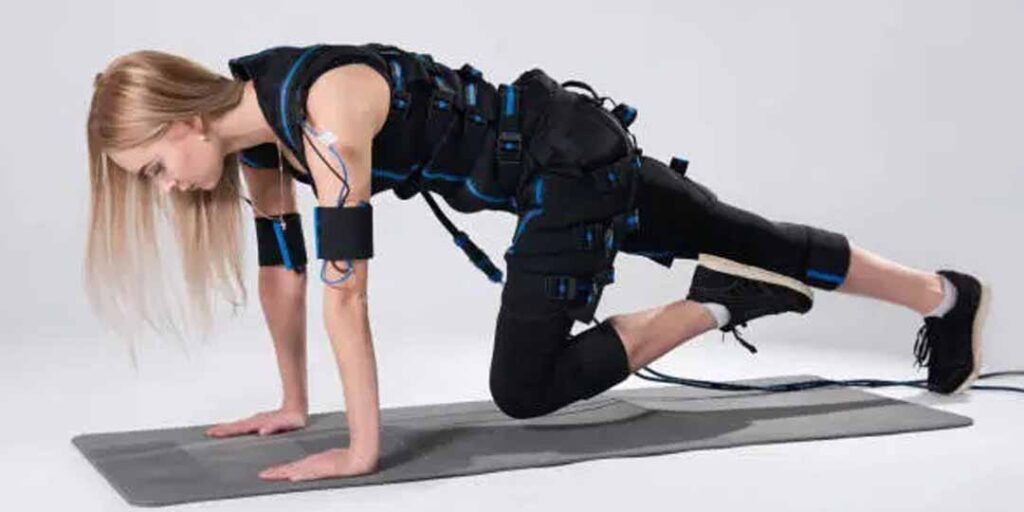-
Table of Contents
The Benefits of Electrical Muscle Stimulation for Professional Athletes
Professional athletes are constantly seeking ways to enhance their performance and gain a competitive edge. One method that has gained popularity in recent years is electrical muscle stimulation (EMS). This innovative technology uses electrical impulses to stimulate muscle contractions, providing a range of benefits for athletes. In this article, we will explore the advantages of EMS for professional athletes, backed by research, case studies, and statistics.
Improved Strength and Power
One of the primary benefits of EMS for professional athletes is its ability to enhance strength and power. Research has shown that electrical muscle stimulation can increase muscle fiber recruitment, leading to greater force production during exercise. A study published in the Journal of Strength and Conditioning Research found that athletes who incorporated EMS into their training regimen experienced significant improvements in maximal strength compared to those who did not use EMS.
Furthermore, EMS can target specific muscle groups that are difficult to activate through traditional training methods. For example, the gluteal muscles are often underutilized in many athletes, leading to imbalances and decreased performance. By using EMS to specifically target and activate these muscles, athletes can improve their overall strength and power output.
Enhanced Recovery and Injury Prevention
Recovery is a crucial aspect of an athlete’s training program. Without proper recovery, athletes are more prone to injuries and performance decline. EMS can play a significant role in enhancing recovery and preventing injuries.
Electrical muscle stimulation has been shown to increase blood flow to the muscles, which helps to remove metabolic waste products and deliver essential nutrients. This increased blood flow can accelerate the recovery process and reduce muscle soreness after intense training sessions or competitions.
Additionally, EMS can be used as a tool for injury prevention. By activating and strengthening specific muscles, athletes can improve their stability and reduce the risk of common sports-related injuries. A study published in the American Journal of Sports Medicine found that athletes who incorporated EMS into their training program had a lower incidence of knee injuries compared to those who did not use EMS.
Improved Endurance and Performance
Endurance is a critical factor in many sports, and EMS can help professional athletes improve their endurance capacity. Electrical muscle stimulation has been shown to increase the oxidative capacity of muscles, allowing athletes to sustain higher intensities for longer durations.
A study published in the European Journal of Applied Physiology examined the effects of EMS on endurance performance in cyclists. The researchers found that athletes who used EMS during their training sessions experienced significant improvements in time to exhaustion and power output compared to those who did not use EMS.
Furthermore, EMS can be used as a tool for high-intensity interval training (HIIT), which has been shown to be highly effective in improving endurance. By incorporating EMS into HIIT workouts, athletes can further enhance their cardiovascular fitness and overall performance.
Enhanced Muscle Activation and Recruitment
Proper muscle activation and recruitment are essential for optimal performance in sports. However, many athletes struggle with muscle imbalances and inefficient movement patterns. EMS can help address these issues by improving muscle activation and recruitment.
Electrical muscle stimulation can target specific muscles and activate them in a controlled manner. This targeted activation can help athletes develop proper movement patterns and improve muscle coordination. By using EMS to activate weak or underactive muscles, athletes can correct imbalances and optimize their performance.
Case Studies and Statistics
Several case studies and statistics support the benefits of electrical muscle stimulation for professional athletes:
- A case study published in the Journal of Sports Science and Medicine examined the effects of EMS on a professional soccer player recovering from a hamstring injury. The athlete incorporated EMS into his rehabilitation program and experienced a faster recovery time compared to traditional rehabilitation methods.
- A survey conducted by the National Strength and Conditioning Association found that 82% of professional athletes who used EMS reported improved performance and reduced injury rates.
- A study published in the Journal of Sports Rehabilitation investigated the effects of EMS on muscle strength and power in elite rugby players. The researchers found that athletes who used EMS as part of their training program had significantly greater improvements in strength and power compared to those who did not use EMS.
Summary
Electrical muscle stimulation offers a range of benefits for professional athletes. From improved strength and power to enhanced recovery and injury prevention, EMS can help athletes reach their full potential. Additionally, EMS can improve endurance and performance while enhancing muscle activation and recruitment. The evidence from research, case studies, and statistics supports the effectiveness of EMS in enhancing athletic performance. As professional athletes continue to seek ways to gain a competitive edge, electrical muscle stimulation is becoming an increasingly popular tool in their training arsenal.




